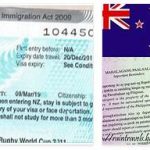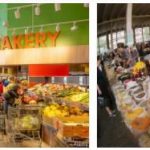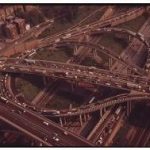Supplies of industrial machinery for agriculture and industry (especially the food industry) are promising. Opportunities exist for the delivery of small transport aircraft and light rail transport systems.
The most promising items for Czech exports, sectors for investment, privatization and development projects
The state agency New Zealand Trade and Enterprise ( www.nzte.govt.nz ) is responsible for supporting the entry of foreign capital into the country. No special tax benefits are given to foreign capital except for the offer of residency for investors above NZD million. Political and economic stability, low costs of doing business and little state intervention in the economy are highlighted as the main advantages for investment in the country.
As an OECD member country, New Zealand recognizes the 1975 OECD Declaration on Foreign Investment and Multinational Enterprises and also recognizes OECD rules on the liberalization of capital movements and other covert operations.
The most promising sectors for investment include:
- food industry,
- primary production (agriculture, fishing, timber)
- information and communication technologies,
- renewable resources,
- shared services (call centers, banking and insurance services)
- tourism industry.
Civil aviation industry
Due to the remoteness of NZ, air transport is very important. 14% of the export value is realized by air transport. NZ has its own airline, Air New Zealand, in addition to which 21 other airlines operate flights to/from NZ. The growing number of tourists contributes to the ever-increasing volume of air transport.
- HS 8411 – Jet engines, turboprop drives and other gas turbines
- HS 8801 – Balloons and airships; gliders, rogala and other non-motorized means of flying
Energy industry
According to allcountrylist, New Zealand is relatively rich in raw materials, however, 60% of energy is generated from renewable sources (mainly hydro, wind and geothermal power plants). 80% of electricity production is covered by renewable sources. Between 2017 and 2018, it was possible to reduce the energy obtained from burning coal by 23%, the amount of energy obtained from burning natural gas was reduced by 21%. The policy of the new government is key to the support of renewable sources. A significant step is the ban on issuing permits for oil field exploration in 2018. Solar energy and bioenergy are also used. There are also deposits of natural gas and oil on the North Island. Coal is mined on the South Island, 40% of which is exported. There are also large deposits of gold and silver in the country. The new government’s energy strategy from 2017 set out the intention of 100% coverage of all energy needs by renewable sources in 2035 and at the same time zero emissions in 2050. In 2019 the NZ government passed a law setting 100% zero emissions by 2050 and 10% reducing methane emissions by 2030. From 2020, the NZ government will consider climate change in its decisions. In 2020, the NZ government intends to invest $650 million in renewable energy sources.
- HS 2713 – Petroleum coke, petroleum tars and other residues of mineral oils or oils from bituminous minerals
- HS 7311 – Containers for compressed or liquefied gas, of iron or steel
- HS 7322 – Radiators for central heating, heaters etc. of iron, steel
- HS 7402 – Unrefined copper, anodes for refining
- HS 8402 – So-called “superheated water” steam boilers
Construction industry
After a downturn during the financial crisis, the New Zealand construction industry is experiencing development, with residential and non-residential construction growing by tens of percent year-on-year. In 2018, there was also a year-on-year increase in the population by 2.2%, which necessitates further residential and non-residential construction. The unprecedented development of tourism leads to the development of the construction of new hotel complexes and accommodation facilities. New Zealand’s Ministry of Trade, Investment and Employment states that in the next 10 years it will be necessary to build at least 26 more hotel complexes in the most visited tourist destinations due to the expected influx of foreign tourists.
- HS 2508 – Ost. clays, kyanite and sillimanite etc. or dinasic soils
- HS 2621 – Ost. slags and ashes, seaweed ash and municipal waste incineration residues
- HS 3210 – Ost. paints and varnishes; prepared water pigments
- HS 3804 – Waste liquors from the manufacture of wood pulp, whether or not concentrated, desugared or chemically treated
- HS 4413 – Compacted wood, in the form of logs, boards, strips or profiles
- HS 5909 – Textile hoses for pumps etc. hoses, whether or not with fittings or accessories made of other materials
- HS 6801 – Paving blocks, curbs and paving slabs, of natural stone (except slate)
- HS 6810 – Articles of cement, concrete or artificial stone, whether or not reinforced
- HS 6903 – Ost. refractory ceramic products
- HS 6904 – Ceramic building bricks, floor blocks, load-bearing or infill moldings and similar products
- HS 7004 – Drawn and blown glass in sheets, not otherwise worked
- HS 7006 – Cast, drawn, floated, drilled, etc. processed glass
- HS 7308 – Other construction and parts and components for use in constructions, made of iron, steel
- HS 8428 – lifting, handling, loading or unloading equipment
- HS 8429 – Self-propelled bulldozers, graders, excavators, etc. with drive
- HS 8907 – Ost. Vessels
Recycling and waste processing
After the 2018 ban on the import of waste to the PRC, the NZ economy is trying to divert exports to other destinations and at the same time it is looking for new solutions for recycling and waste processing ( Rethinking Plastics in Aoteaora New Zeland project).
- HS 8419 – Machines for processing materials by changing temperatures
- HS 8421 – Centrifuges for filter cleaning devices
- HS 8422 – Washing machines for cleaning fillings and bottles etc
Defense Industry The
New Zealand Defense White Paper 2016 ( Defense White Papers ) proposes a 15-year plan to modernize the military for almost NZD 20 billion. It is followed by the investment plan for military acquisitions from 2019. It outlines all investments until 2030, still counting on the 20 billion NZD budget from the previous plan. The main news are announcements of possible investments in the Super Hercules aircraft and four P8-A Poseidon aircraft, as well as investments in the navy. The plan is to increase the strength of the army to 6,000 soldiers by 2035. In August 2019, the NZ Army announced the second round of upgrading its technological equipment – the Network Enabled Army program, which includes radios, satellites and electrical generators. The White Paper also plans to increase spending on cyber security and military intelligence.
- HS 8805 – Aviation catapults ap. devices and equipment
- HS 9305 – Parts, components and accessories of products of headings 9301 to 9304
Agriculture and food industry
New Zealand’s greatest asset is its fertile agricultural land and year-round mild climate suitable for grazing. New Zealand is a major global producer and exporter of milk and dairy products, beef and mutton, fruit and wool. Another important sector is fruit growing (kiwi, apples) and wine growing, fishing and forestry. New Zealand wants to export more processed value-added products. Therefore, the export of Czech agricultural machinery and lines to the processing industry has potential. New Zealand is 70% self-sufficient in grain production, 30% of grain is imported.
- HS 2203 – Malt beer
- HS 2303 – Starch residues, beet cuttings, bagasse and other sugar, brewery and distillery waste
- HS 2306 – Crumbs and other solid residues, crushed or in the form of pellets, after extraction of vegetable fats or oils
- HS 8422 – Dishwashers; machines for cleaning, filling, etc. bottles, cans, etc.
- HS 8434 – Milking machines and dairy machinery and equipment
- HS 8436 – Ost. machines for agriculture, forestry, beekeeping, etc., artificial hatcheries
- HS 8437 – Machines for cleaning, sorting or sifting seeds, grains, etc.
- HS 8438 – Machinery for the preparation, manufacture of food or beverages
The transport industry and infrastructure of the
New Zealand railway KiwiRail currently has 4 thousand. km of railway lines and employ around 4 thousand. workers. Commuter rail services operate in Auckland and Wellington. Roughly 15% of goods are transported to New Zealand by rail (approx. 900 train sets per week) and it is assumed that this volume will increase in the future, especially on rail lines that lead to important New Zealand ports.
Infrastructure spending for the decade 2019-29 is projected at NZD 129 billion, a 28% increase over the previous decade. A significant part of these investments goes into the construction of railways and roads.
Auckland City Rail Linkit represents the largest project of its kind so far, after its completion in 2024, the transport capacity of Auckland will be doubled, the connection and continuity of existing stations will be improved, and some stations will be lined with new ones. The investment of the entire project is estimated at NZD billion.
Auckland Light Rail is expected to deliver a newly built suburban train network that has been prioritized over buses between 2018-28. In its final form, it will connect Auckland city center via Mangere to the airport, as well as cover the connection between the city center and the north-west of Auckland. The estimated investment for the entire network is around NZD 6 billion.
The expansion of Auckland Airport is also a long-term project. The successive works, estimated at a total of 160-180 million NZD, aim to achieve a transport capacity of 40 million passengers and 260,000 handled flights by 2040. In 2017, the airport transported 19 million passengers on approximately 160,000 flights.
Wellington Airport has announced its investment plan for the next twenty years. He plans to invest more than $1 billion NZD in the upgrade, which should bring about double the growth of the economy and create up to 22 thousand jobs.
- HS 8603 – Railway or tramcars and freight cars, self-propelled
- HS 8607 – Parts of railway or tramway locomotives or rolling stock
Services and tourism
The most dynamic sector of the New Zealand economy is services, which account for 70% of GDP and make up 75% of exports. The first place in NZ exports is services in the tourism industry. 200,000 people are employed in tourism in New Zealand. The number of tourists visiting New Zealand has been growing continuously since 2010, in 2019 (until June) the number of tourists reached over 2,191,411 ( note the population of New Zealand is million ). The NZ government devotes considerable financial resources to the development of tourism infrastructure every year, for example the Tourism Infrastructure Fund administered by the Ministry of Trade, Innovation and Employment will provide $100 million NZD over a period of 4 years for the development of tourism-oriented infrastructure.
Event calendar
Notable regular events in New Zealand include:
NATIONAL AGRICULTURAL FIELDAYS
Agricultural machinery, everything for agriculture
The original date in June 2020 has been postponed due to the COVID-19 pandemic, the
largest trade fair in its field in the southern hemisphere / over 100,000. visitors/
website: www.fieldays.co.nz
Christchurch A & P Show
Agriculture
2020 date not confirmed due to the COVID-19 pandemic
website: https://www.theshow.co.nz/






